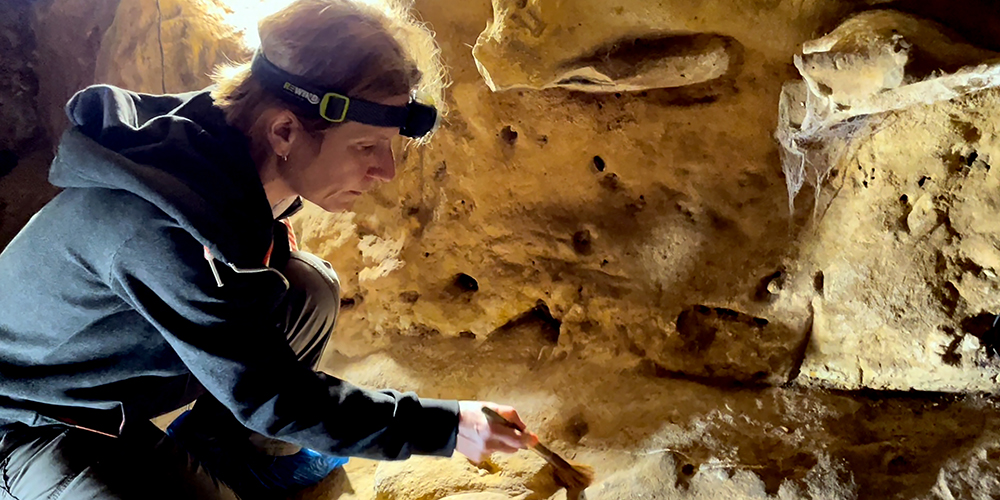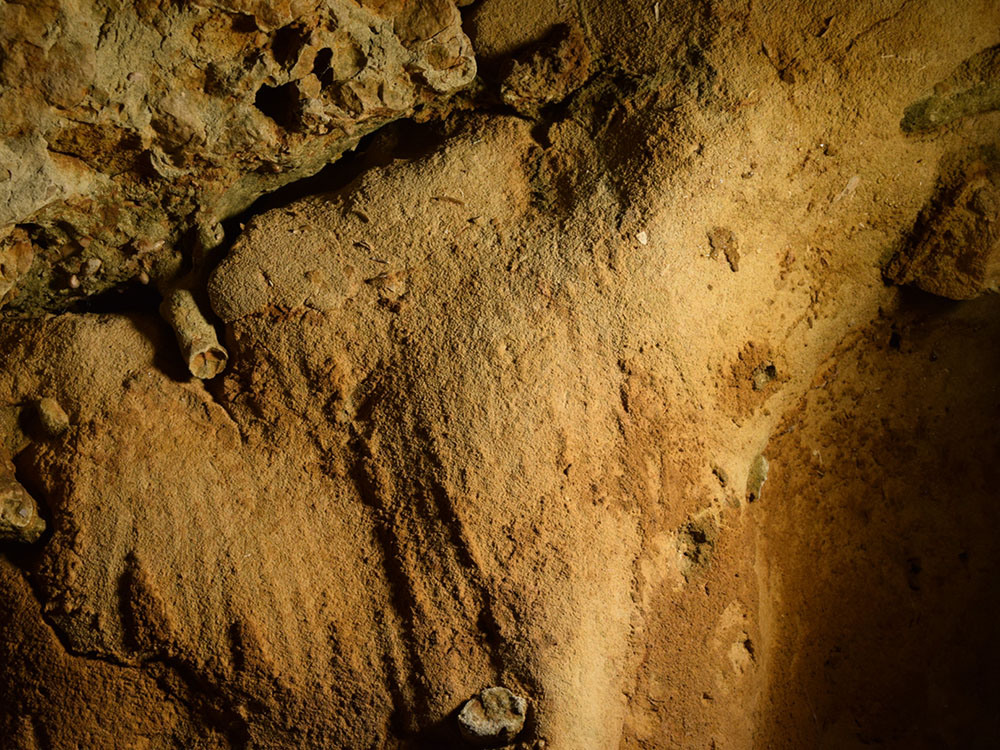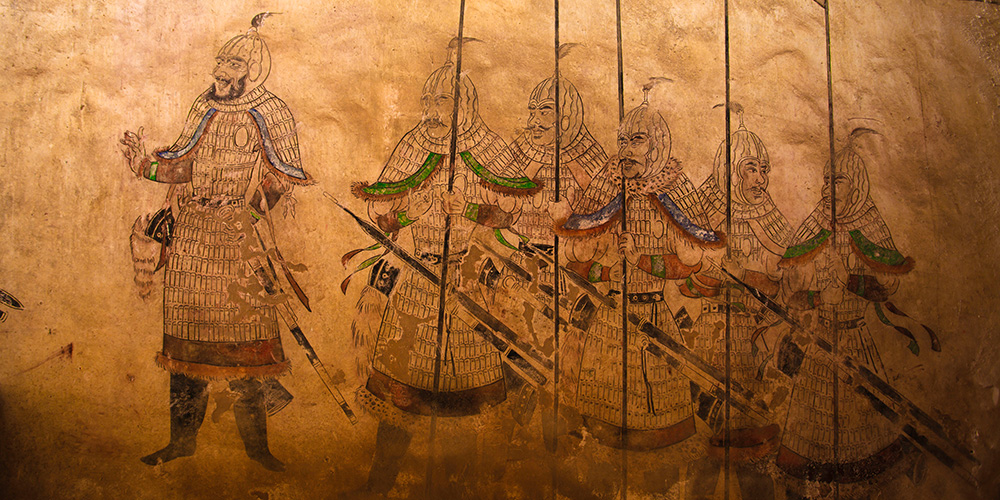Neanderthals were the world’s first artists
Recent research has shown that engravings in a cave in La Roche-Cotard (France), which has been sealed for thousands of years, were actually made by Neanderthals. This research was performed by Basel archaeologist Dorota Wojtczak together with a team of researchers from France and Denmark, whose findings reveal that the Neanderthals were in fact the first humans with an appreciation of art.
21 November 2023 | Christian Heuss
When the French archaeologist Jean-Claude Marquet entered the La Roche-Cotard cave in the Loire Valley for the first time back in 1974, he suspected that the fine lines on the wall could be of human origin. He also found scrapers and other retouched pieces known as Mousterian stone artifacts that suggested the cave had been used by Neanderthals. Were the marks on the wall evidence of early Neanderthal artistic activity?
Posing this question raised the possibility of breaking with the consensus of the time, which largely assumed that Homo neanderthalensis lacked any higher cognitive abilities. Fearing he would be unable to provide sufficient scientific evidence to prove his hypothesis, Marquet left the cave untouched for almost 40 years.
Marks on the wall produced by human hands
Together with an international team, he made another attempt in 2016. This time he was accompanied by Dr. Dorota Wojtczak from Integrative Prehistoric and Archaeological Science (IPAS) at the Department of Environmental Sciences of the University of Basel, who specializes in archaeological use-wear analysis. “Our task was to use modern methods to prove the human origin of these wall engravings,” explains Wojtczak in her office at IPAS. The researchers recently published their findings in the journal PLOS ONE.
First with photos and drawings and later with a 3D scanner, the marks in the tuff rock of the cave wall were meticulously recorded. In her laboratory in Basel, Wojtczak compared these samples from the cave with tuff she had worked on experimentally with wood, bone and stone tools, as well as with her hands. “This research clearly showed that the cave marks were not made with tools, but by scratching with human fingers,” says Wojtczak.
Cave sealed for over 50,000 years
At the same time, examination of cave sediment by researchers from Denmark showed that the cave must have been sealed off by mud residues from the Loire and soil sediments for over 50,000 years before being rediscovered. This makes the La Roche-Cotard cave system a very special location – a veritable “time capsule”. “At this time, 50,000 years ago, there were no modern humans in Europe, only Neanderthals,” says Wojtczak. The wall marks and artifacts can therefore only come from these early humans.
While the clear geometric shapes with parallel and triangular lines suggest that these marks were not scribbled on the wall by chance, the researcher does not know what they represent. “But they could only have been made by someone who proceeded with planning and understanding,” she says. And whether it was “art” as such, or a form of recording-keeping, is a matter of interpretation.
La Roche-Cotard promises further findings
The cave holds many other archaeological secrets. Jean-Claude Marquet also found an object that resembles the face of a human or animal back in 1976, and Wojtczak’s use-wear analysis suggests that this object is also man-made. Another object from the cave appears to be a small oil lamp. “Specialists are currently investigating whether the object bears any pigments or soot substances that could help to identify the type of fuel used at the time,” explains Wojtczak.
The chamber of La Roche-Cotard that has been explored so far is just one part of an entire cave system. The researcher hopes to gain further insight into the Neanderthals’ activities, particularly from Chamber 4, which is still largely covered by sediment. Wojtczak is convinced that every investigation will help to further the dismantle traditional consensus of Neanderthals as mentally inferior humans, and reinforce the perception of them as more like the cousins of modern humans. “They could speak, and probably even sang,” she adds, grinning.
Dorota Wojtczak will continue her research into Neanderthal life in La Roche-Cotard together with her students from the Prehistory and Archaeological Science degree program.
Original publication
Jean-Claude Marquet et al.
The earliest unambigous Neanderthal engravings on cave walls: La Roche-Cotard, Loire Valley, France
PLOS One (2023), doi: 10.1371/journal.pone.0286568




